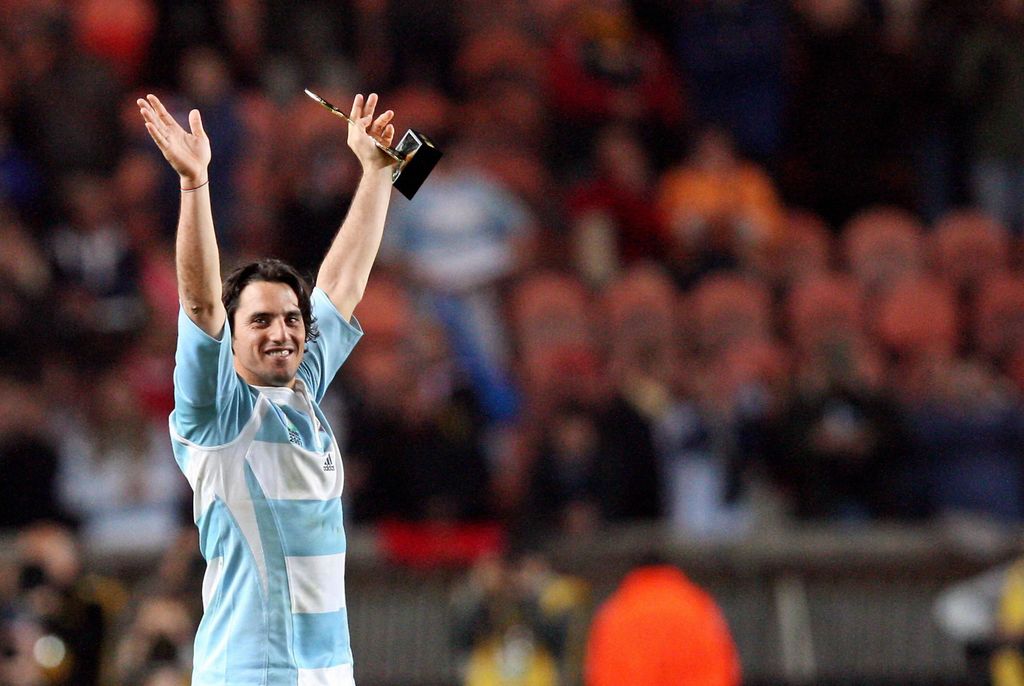The rumblings that Argentina’s elite players made on the field were too loud to be ignored and with most of their stars plying a trade in Europe’s top clubs, there were powers that were pushing for their inclusion in an enlarged Six Nations. Although it made sense in the short run as most of the top Pumas were then based in France and England, it didn’t happen. The year was 2007.
Less than a month after Los Pumas had shocked the oval ball world by taking the bronze medal at Rugby World Cup 2007 – twice beating hosts France – rugby’s fraternity met in Woking at the IRB Rugby Forum held in that part of south London over three days.
Among the many issues facing the then International Rugby Board – since renamed World Rugby – one was Argentine rugby’s place in the global game.
“We had hopes of joining the Six Nations but that was not possible,” recalls then national captain Agustín Pichot, one of five Argentines at the Woking meeting.
“After that I was taken into a room and told in no uncertain way that if we were to join the top table in the southern hemisphere we had three key issues to confront: player availibility, a high-performance structure and a political-financial plan.”
Financial support from World Rugby
Despite the team’s success, the Argentine Rugby Union (UAR) was at the time under receivership and struggling in its relationship with World Rugby. There was a lot of mending to do. Under new president, Porfirio Carreras, today a member of World Rugby’s Regulations Committee, the plan started to take shape in 2008 and with the financial support of World Rugby, 2 February 2009 marked the launch of the high-performance units, five of them distributed in the main rugby centres in Argentina. That would grow to today’s 14 centres which cater for more than 950 players.
To some, it seemed that what Argentina was needing was a professional tournament. The UAR did not agree and wisely shielded its strong amateur game, currently with more than 115,000 players in 522 clubs underpinned by thousands of unpaid coaches and officials.
“It took some time to convince people internally that we were not chasing a professional tournament and externally that we didn’t need a professional tournament. Looking back at all that we’ve done in the past seven years, it was the right thing to do,” argues Pichot, now the UAR’s representative on World Rugby and SANZAR Councils.
A successful Junior World Championship in 2010 – when Julian Savea was the stand-out player – showed that Argentina was capable of organising important events.
Steady growth
“You might not see growth as you are covering the game on a daily basis. Whenever we come here we see how many strides are being taken,” World Rugby Chairman Bernard Lapasset told a group of journalists at the time.
“It is like watching your son grow… you might not notice the changes yourself but the uncle who comes every now and then to visit is surprised by how much your child has grown.”
SANZAR announced that an Argentine team would probably play in a new tournament from 2012. To ensure the best players were available, World Rugby added a new test window to its Regulation 9 to include the future Rugby Championship. Another key support from Dublin arrived in the form of financial aid allowing the team’s inclusion to play twice a year against the All Blacks, Wallabies and Springboks.
During the first three seasons, every Puma player made himself available and despite the fact that it took 18 games to secure the first win – last October against the Wallabies – Argentina had been competitive from the start and seldom found to be out of their depth.
Home-grown talent to the fore
Extremely satisfying was that when Los Pumas beat France in Paris – a much favoured haunting ground for the team – they did it with 20 of the 23 players that came through the high-performance plan. Eighteen of the players that beat Australia in 2014 were members of the home-based 15 called Pampas that played in South Africa’s Vodacom Cup from 2010-13 and, in 2014, that won the Pacific Rugby Cup.
The next stage in the master plan was to get a franchise into Super Rugby. That was finally confirmed in November 2014. An expensive venture, the UAR has ensured it can finance it 100 per cent without the need for external partners.
“That is a key point in our plan,” said President Carlos Araujo. “In doing so, the benefits we generate will be reinvested in the game, allowing us to continue taking care of our growing grassroots.”
Argentina stands only behind South Africa in World Rugby courses delivered. It has undertaken more than 700 courses around the country, spreading the game at every different level. A further sign of Argentina's growing importance in rugby and in sport generally was its successful bid to host the Youth Olympic Games 2018 in Buenos Aires, where sevens will play a featured role.
“Our aim as a union is to have more and better-prepared players,” said Araujo, who has just finished his first of four years at the helm.
The solid way Argentine rugby has grown in the past seven years has meant a lot of work and progress. It all started on a cold November week in Woking.
This feature forms part of our Around The Regions series exploring the game across the globe. Do you have an interesting story to tell about rugby around the world? Let us know by emailing aroundtheregions@worldrugby.org.
